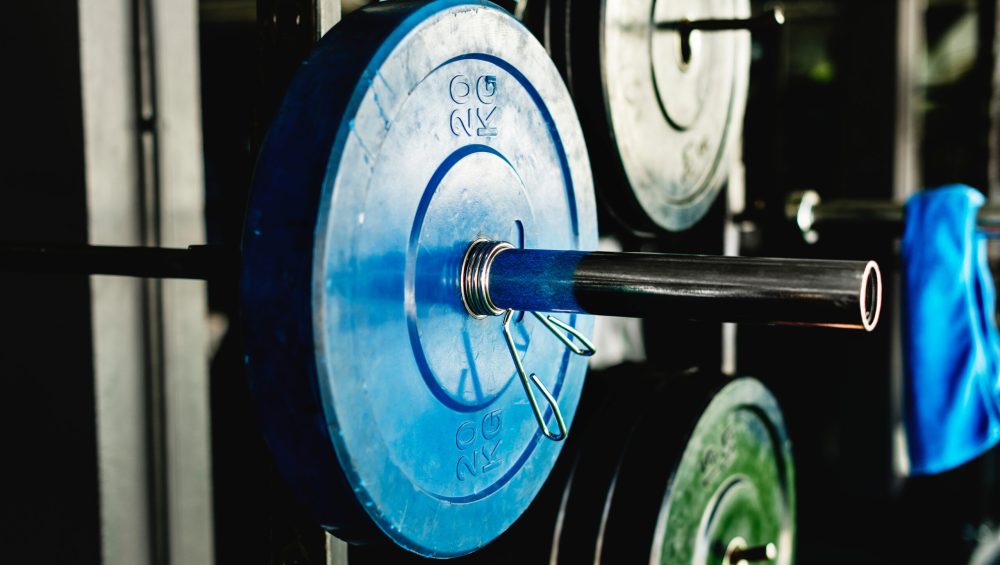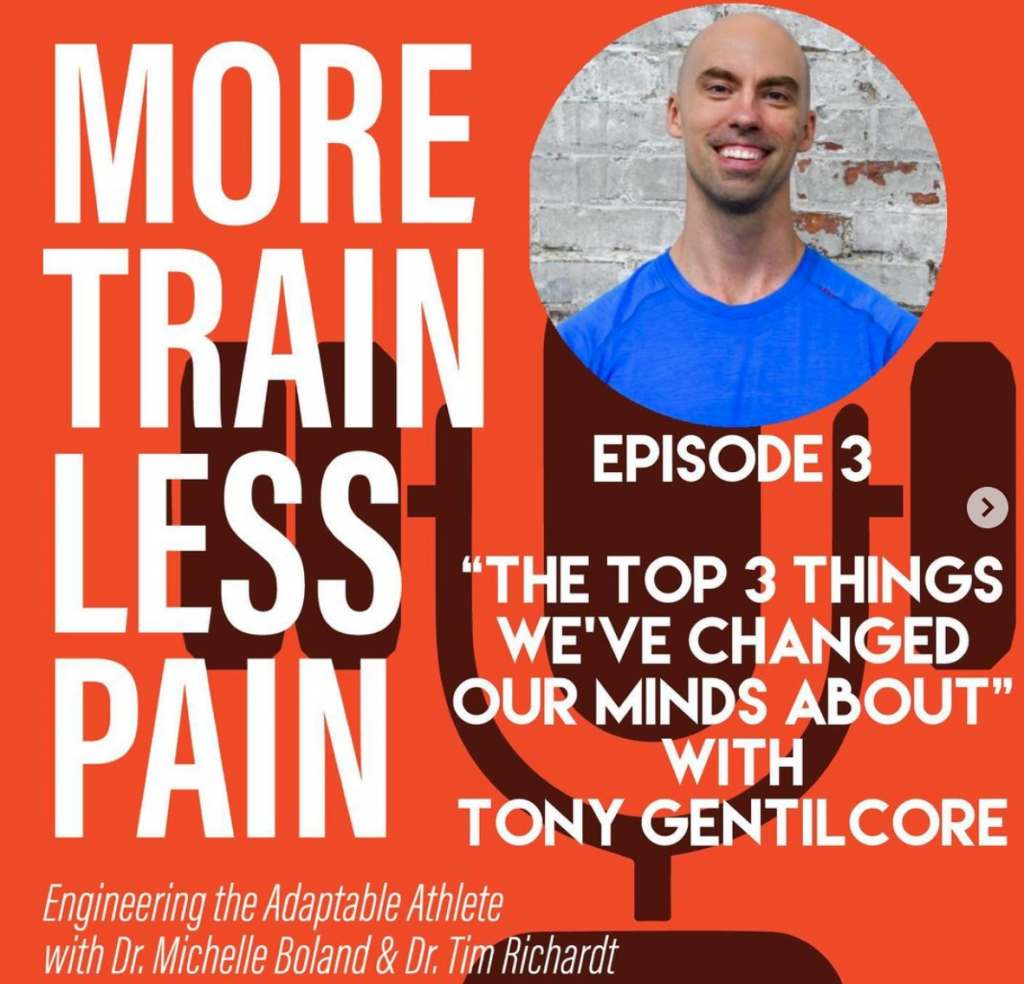I have an excellent guest post for you today. I was recently invited back onto the More Train, Less Pain Podcast hosted by my good friends Dr. Michelle Boland and Dr. Tim Richardt.
This season on their show they’re focusing on training around injury. This is one of my wheel houses (alongside deadlifts, how to look jacked even while wearing sweatpants, and Ted Lasso), as I am always preaching the benefits of finding each client’s or athlete’s TRAINABLE MENU.
My episode – #13 – dropped today (links below), but in concert with that Tim was kind enough to write a little “companion piece” that ties in nicely with the overall theme of the show.
I hope you check both of them out.
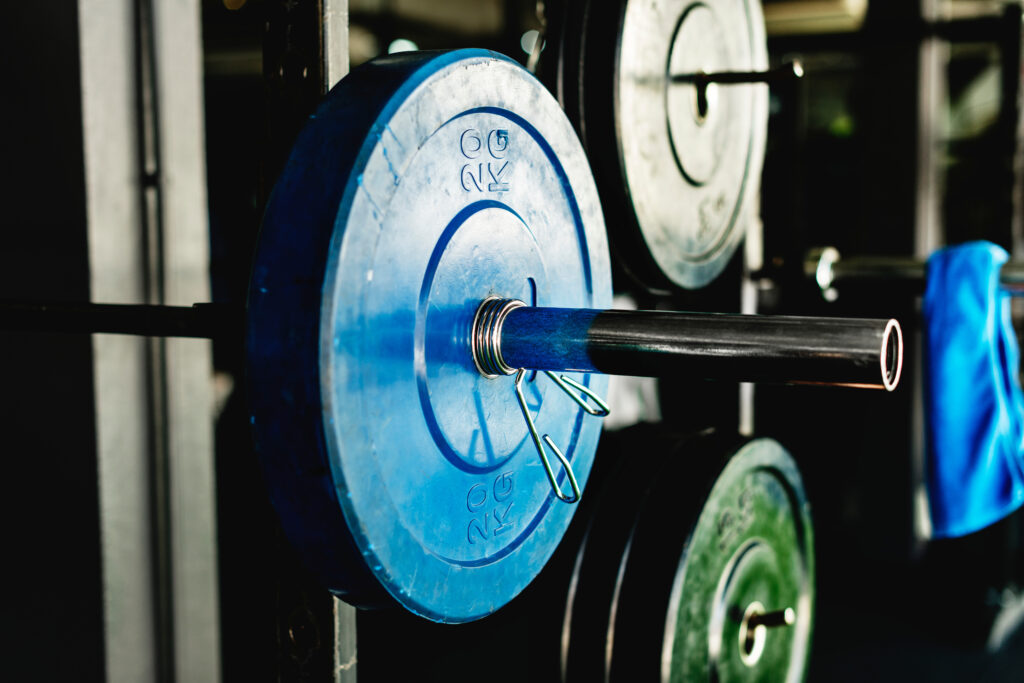
3 Strategies to Evolve Without Increasing Weight
If you’re reading this blog, chances are you’re a big fan of lifting heavy things. On this we can agree, and be friends.
Think back to the first time you consistently trained a squat- Linkin Park blaring, a thin haze of aerosolized pre-workout and chalk filling the air – and being able to add 5-10 pounds, like clockwork, week after week after week.
It’s the honeymoon phase of strength training- nothing hurts and there’s seemingly no impediment to riding this sweet, sweet train of linear progression to, inevitably, being able to sit down and stand up with the weight of a Honda Fit on your back.
But, like all marriages, reality eventually has to settle in.
Over the years, aches, injuries, and movement limitations accumulate and the simple strategy of adding more pounds to the bar is suddenly not so viable.
What, then, is an iron warrior to do?

I host a podcast called More Train, Less Pain (on which the venerable Tony Gentilcore has guested twice), along with another contributor to Tony’s blog- Michelle Boland- where we dive deep on strategies to keep people training hard in the gym despite injuries and mobility restrictions.
The focus of our current season is on maintaining a strength training practice in the setting of persistent pain, something of personal obsession of mine as I’ve struggled with persistent hip pain due to congenital structural hip defects for virtually my entire adult life. Over the past dozen or so episodes, we’ve talked with some of the brightest minds in the industry (Mike Boyle, Bill Hartman, some schlub we’ll call “Tony G”) about this very problem, and one theme keeps re-emerging over and over. We can’t keep progressing load forever. Infinite progression, in the weight room or any other endeavor, is a myth.
NOTE From TG: You can listen to my most recent chat with Tim HERE – titled “Easy Training, Stoplights, and Making Bigger Cups.”
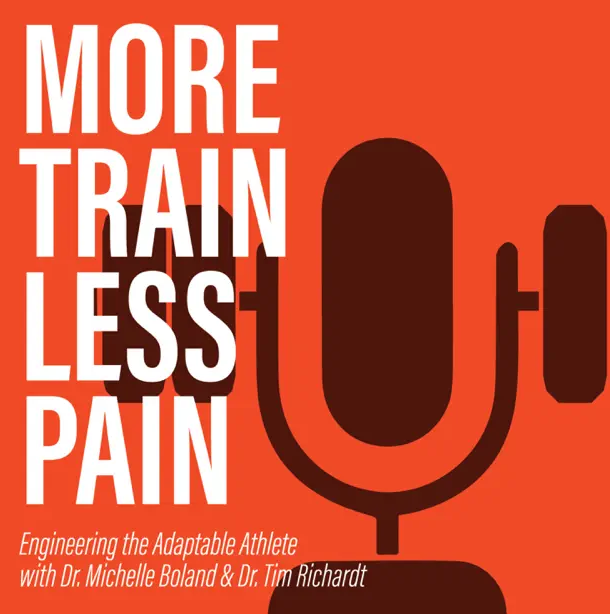
In order to stay in the strength training game and continue to build muscle, power, and movement quality, we need to find ways to evolve our exercise selection and programming strategies so that we can continue to train without creating undesirable tissue damage or reducing access to comfortable range of motion.
Below are three strategies to do just that, lifted directly from this season’s podcast guests and thoroughly vetted by my own personal and professional experience.
1. Timed Sets
In the most straightforward manner of progressing lifts, we add load to the bar every week, keeping the set/rep/rest scheme the same, essentially the missionary of the strength-training world.

Not THAT missionary. Head out of the gutter
As we stated – this works…until it doesn’t. What if, instead of increasing load, we simply increase time under tension? In fact, what if we throw away the conventional “rep” dosing structure and just endeavor to dose an exercise by time, increasing the time (under tension) over the course of a 6 week training block.
In practice, that progression might look something like this.
Exercise Week 1 Week 2 Week 3 Week 4
Foam Roller Wall Squat 3×1′ 4×1′ 4×90″ 4×2′
In this way, we can accumulate absurdly high amounts of workload (and stimulus) with reduced axial loading. If you struggle with SI joint pain every time you get under a bar loaded with over your bodyweight, give a single set of a 2’ timed Roller Wall Squat a try.
With only a fraction of the loading required for a conventionally-dosed barbell back squat, you’ll still feel every bit as fatigued, and continue to stay engaged with the training process as you build time under tension across a program.
This strategy works particularly well for exercises where increasing weight isn’t convenient due to the nature of the position or loading- think anything with a zercher or goblet hold OR a position that requires a more involved set up.
2. EMOM Supersets
People in our industry love talking s&^t about CrossFit, but they’ve popularized several things that have impacted the general fitness landscape for the better – gymnastics skills, concurrent training, snorting lines of grass fed whey protein isolate before a set of 30 hang snatches, and EMOM sets.
In an EMOM set, you’ll keep the load of an exercise the same but perform a certain number of reps every minute on the minute (EMOM).
In my own training, I’ve found it useful to combine two exercises into an EMOM superset – meaning that every minute we’ll do a predetermined number of reps for each exercise, rest for the remainder of that minute, and repeat. In practice, a 6 week progression might look like this:
Exercise Rest Week 1 Week 2 Week 3 Week 4
A1. Trap Bar DL 0′ 4×3 5×3 6×3 7×3
A2. Alt. 1-Arm DB Bench Remainder of 60″ 4×8 5×8 6×8 7×8
Trap Bar DL EMOM
1-Arm DB Bench Press EMOM
The cool thing about EMOM sets, especially for athletes making the switch from conventional, load-obsessed strength training, is that they possess an entirely novel strategy for dramatically ramping up total load in a program without increasing axial load for any one particular set.
Mathematically, we can contrast a session of EMOM deadlifts with a session of conventionally-progressed deadlifts, which would look something like this:
Exercise Week 1 Week 2 Week 3 Week 4 Week 4 Workload
TBDL 6×3 @ 225 8×3 @ 225 10×3 @ 225 12×3 @ 225 8,100 lbs
TBDL 6×3 @ 255 6×3 @ 275 6×3 @ 295 6×3 @ 305 5,490 lbs
Over time, this may represent a more sustainable long term strategy for continuing to progress workload when absolute loading on any given repetition can no longer be increased. Additionally, plugging a few EMOM supersets into your training each week can serve as a mild conditioning stimulus for those who struggle to fit in aerobic work.
3. Feel-Based Training
The previous two strategies have emphasized unconventional strategies for increasing the overall workload of a training session, but our final strategy is a different beast altogether.
We love to think about increasing an exercise’s output via weight on the bar or overall pounds lifted throughout working sets. But what if we got “stronger” simply by executing an exercise more efficiently, potentially using a larger range of motion, while making no changes to dosing or loading throughout a cycle?
Depending on a client’s goals and injury history, somewhere between 20%-50% of exercises I program will be progressed by “feel” alone. This means they’re not allowed to do anything “more” over their 4 week cycle. Not more load, not more reps, not faster reps, not even more cowbell.
We’re deliberately freezing these variables to clear cognitive bandwidth for getting as close as possible to *flawless* execution of the drill.
In something like a FFESS, for example, I may stick to 4 sets of 8 reps per leg throughout the entire cycle, loaded with a #25 KB in a goblet hold, but endeavor to improve other aspects of performance. Can a client maintain foot contacts on both the front and rear foot? Does their pelvis stay fairly level in the frontal plane? Do they control the degree of anterior and posterior pelvic tilt at the top and bottom of the range of motion, respectively?
Can they get the back knee further down towards the ground? Are they able to push UP and BACK to take advantage of the retropropulsive, joint-opening qualities of this drill?
In some ways, this is the most boring option for “progression,” but if you can get it into your and your client’s respective heads that we can freeze dosing and simply work on movement integrity and fidelity, a myriad of other training options open.
And options, more than anything else, help folks train consistently for years to come.
If you liked the content in this article, I’d recommend checking out More Train, Less Pain; Engineering the Adaptable Athlete- S3E13 with Tony drops today.
Available on both Spotify and Apple Podcasts.
About the Author
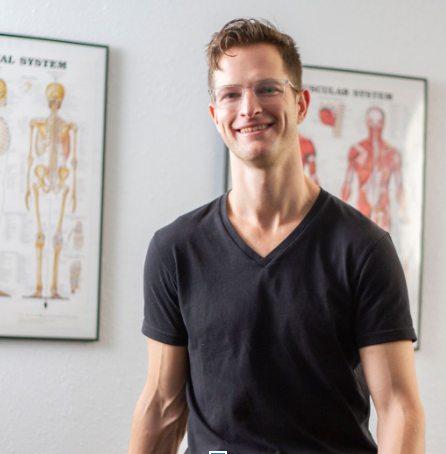
Tim Richardt is a Colorado-based Doctor of Physical Therapy and Strength and Conditioning Coach. He works with runners, climbers, CrossFitters, and tactical/mountain athletes to better help them manage long standing injuries and reach higher levels of physical performance. He also mentors young clinicians and coaches to help them develop their own unique treatment/training model. You can find out more about him at TimRichardt.com or through his IG HERE.

